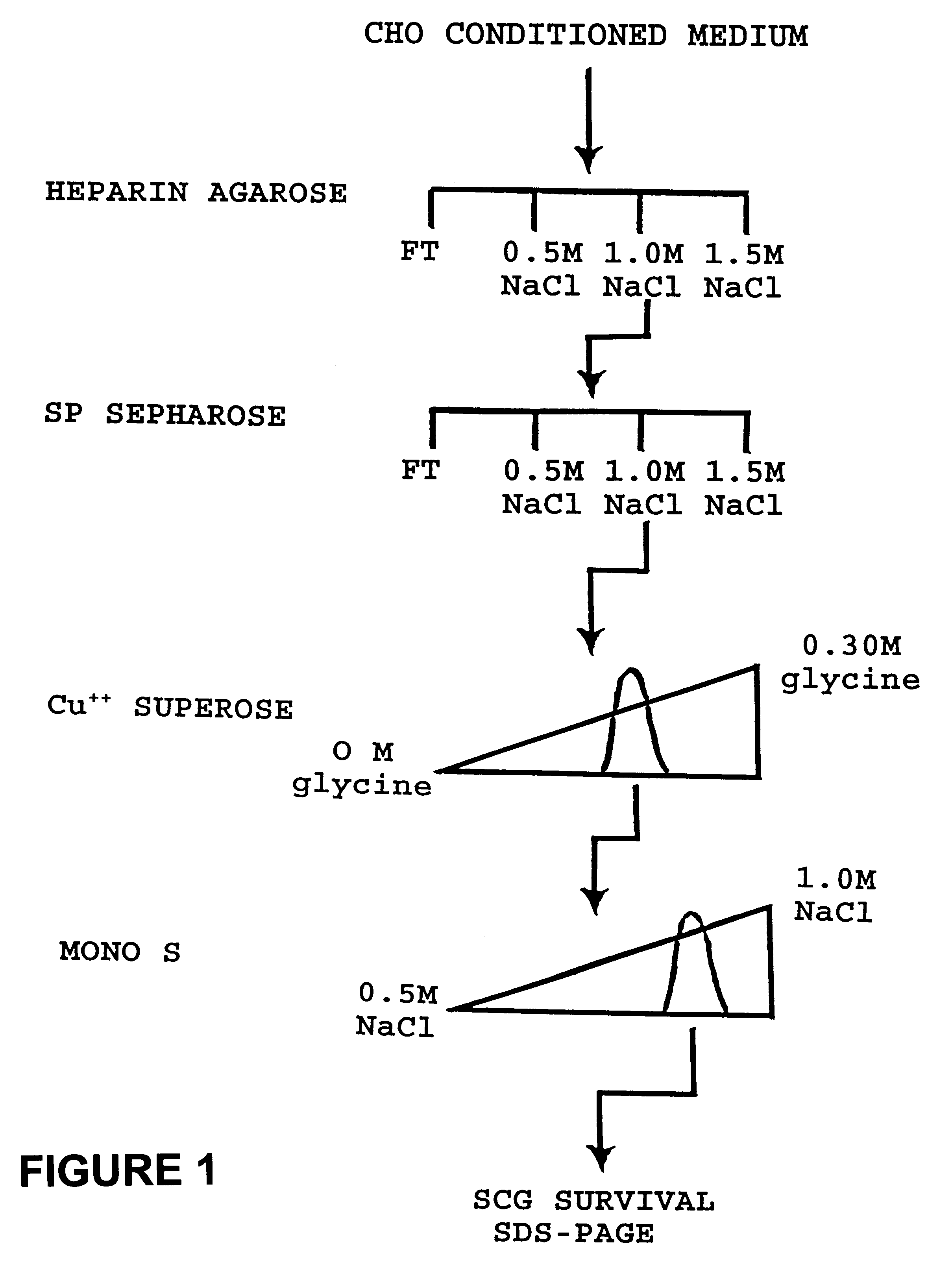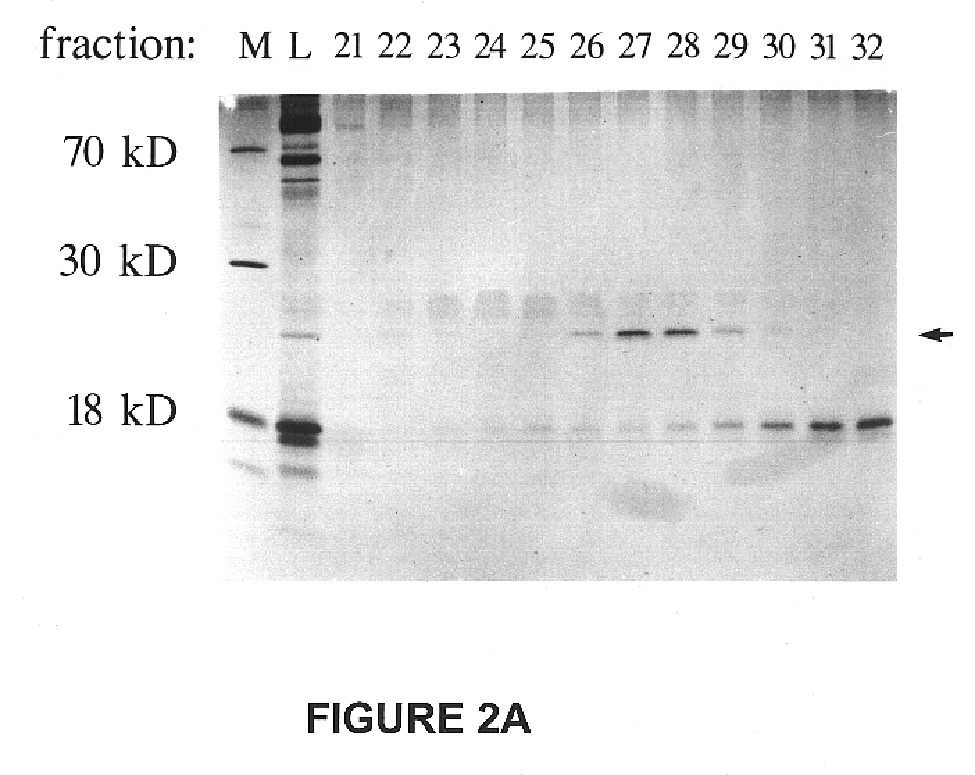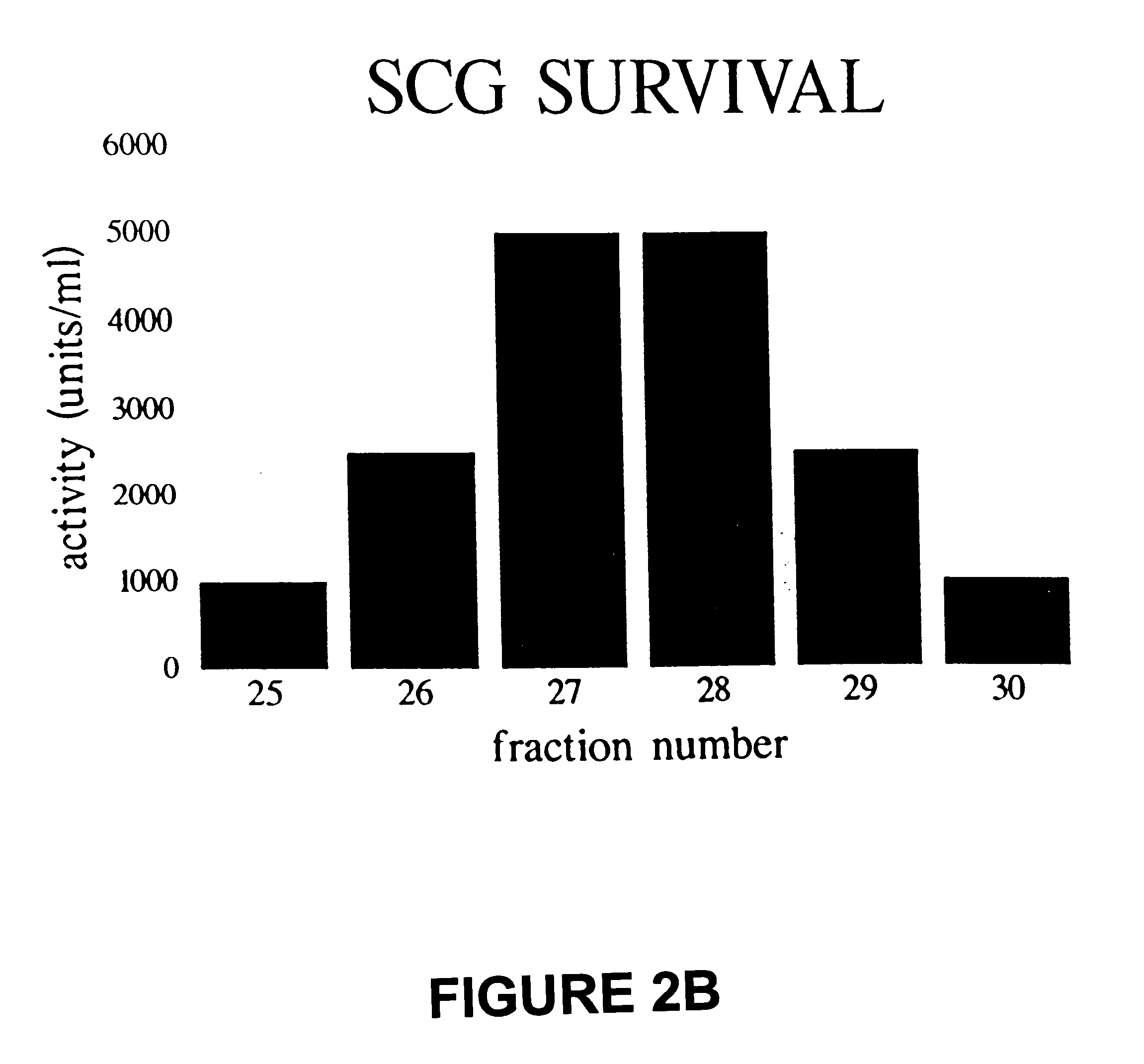Method of cell culture using neurturin
a cell culture and neurturin technology, applied in the field of trophic or growth factor, can solve the problems of death of neurons, above approaches have not been successful in identifying other gene family members,
- Summary
- Abstract
- Description
- Claims
- Application Information
AI Technical Summary
Benefits of technology
Problems solved by technology
Method used
Image
Examples
example 2
This example illustrates the characterization of neurturin and several members of the TGB.beta. family of growth factors in the SCG assay and the lack of cross reactivity of anti-GDNF antibodies with neurturin.
The SCG assay of the purified protein indicated that the factor is maximally active at a concentration of approximately 3 ng / ml or approximately 100 pM and the EC.sub.50 was approximately 1.5 ng / ml or approximately 50 pM in the expected range for a diffusible peptide growth factor (FIG. 4).
Several members of the TGF-.beta. family influence neuropeptide gene expression in sympathetic neurons, while others promote survival of different neuronal populations. Neurturin, which is a distant member of this family of proteins, is capable of promoting virtually complete survival of sympathetic neurons for 3 days. In addition, further culturing of the SCG cells revealed that neurturin could continue to maintain these neurons for at least 10 days after withdrawal of NGF.
We tested several...
example 3
This example illustrates the effect of neurturin on sensory neurons in a nodose ganglion survival assay.
CHO cell conditioned media that had been partially purified on the SP Sepharose column was assayed for neurotrophic activity on sensory neurons iusing nodose ganglia. The survival assay is a modification of that previously reported above for superior cervical ganglia. Primary dissociated cultures of nodose ganglia were prepared by dissecting tissue from E18 Sprague Dawley rat pups The nodose ganglia were placed in Leibovitz's L15 with 2 mM l-glutamine (Cat#11415-023, GIBCO-BRL. Gaithersburg, Md.) as the tissues was dissected, digested for 30 min with 1 mg / ml collagenase (Cat#4188, Worthington Biochemical, Freehold, N.J. in Leibovitz's L15 medium at 37.degree. C., followed by 30 min digestion in trypsin (lyophilized and irradiated, type TRLVMF, Cat #4454 Worthington Biochemical, Freehold, N.J. and resuspension to a final concentration of 0.25% in modified Hank's Balanced Salt Solut...
example 4
This example illustrates the determination of partial amino acid sequences of neurturin isolated from CHO cell conditioned medium.
To obtain N-terminal amino acid sequence from a purified preparation of approximately 1 .mu.g of neurturin, the Mono S fractions 26-29 containing the peak of activity were concentrated to 25 .mu.l by centrifuge ultrafiltration in a microcon-3 concentrators (Amicon, Inc., Beverley, Mass.) and loaded onto a non-reducing 14% SDS polyacrylamide gel. After electrophoretic separation, proteins were electroblotted to a PVDF membrane (Bio-Rad, Hercules, Calif.) and,stained with 0.1% Coomassie Blue. The 25 kD band was excised and inserted into the reaction cartridge of an automated sequencer (Model 476, Applied Biosystems (Foster City, Calif.). Phenylthiohydantoin-amino acid (PTH-aa) recovery in the first 2-3 cycles of automated sequencing by Edman degradation indicated a sequencing yield of 4 pmoles, which was approximately 10% of the estimated amount of protein ...
PUM
| Property | Measurement | Unit |
|---|---|---|
| volume | aaaaa | aaaaa |
| volume | aaaaa | aaaaa |
| concentration- | aaaaa | aaaaa |
Abstract
Description
Claims
Application Information
 Login to View More
Login to View More - R&D
- Intellectual Property
- Life Sciences
- Materials
- Tech Scout
- Unparalleled Data Quality
- Higher Quality Content
- 60% Fewer Hallucinations
Browse by: Latest US Patents, China's latest patents, Technical Efficacy Thesaurus, Application Domain, Technology Topic, Popular Technical Reports.
© 2025 PatSnap. All rights reserved.Legal|Privacy policy|Modern Slavery Act Transparency Statement|Sitemap|About US| Contact US: help@patsnap.com



